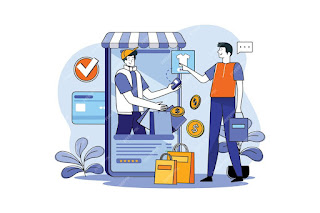P2P (Peer-to-Peer) Marketplace: A Full Development Guide 2024
Peer-to-peer (P2P) marketplaces are an influence in the ever-changing world of online commerce, bringing consumers and sellers together directly without the need for middlemen. The need for P2P marketplaces is only going to increase as 2024 approaches, providing companies and entrepreneurs with a profitable chance to develop cutting-edge platforms. We'll go through all the important details of creating a P2P marketplace in 2024 in this extensive guide.
Understanding the P2P Marketplace Concept
A P2P marketplace is a platform that facilitates transactions between users, allowing them to buy and sell goods or services directly. Unlike traditional e-commerce models, P2P marketplaces eliminate the need for middlemen, fostering a more decentralized and efficient ecosystem.
Key Features of a Successful P2P Marketplace
User-Friendly Interface
Design an intuitive and visually appealing interface to enhance user experience.
Implement responsive design for seamless access across various devices.
Trust and Security
Prioritize user data security with robust encryption protocols.
Implement user verification mechanisms to build trust among participants.
Payment Integration
Integrate multiple payment gateways to accommodate various user preferences.
Ensure secure and transparent transactions through escrow services.
Review and Rating System
Include a comprehensive feedback system to allow users to rate and review transactions.
Use reviews to build credibility and assist users in making informed decisions.
Search and Filter Capabilities
Implement advanced search and filter options for users to easily find products or services.
Optimize search algorithms to provide accurate and relevant results.
Mobile App Development
Recognize the importance of mobile platforms and invest in developing a user-friendly mobile app.
Ensure cross-platform compatibility for a wider reach.
Development Process
Market Research
Identify a niche or industry that can benefit from a P2P marketplace.
Analyze competitors and user behavior to refine your platform's unique selling points.
Technology Stack
Choose a scalable and secure technology stack that aligns with your platform's requirements.
Consider using blockchain technology for enhanced security and transparency.
Prototyping and Design
Develop wireframes and prototypes to visualize the platform's structure.
Collaborate with UX/UI designers to create an engaging and user-friendly design.
Backend Development
Build a robust backend infrastructure to handle user data, transactions, and communication.
Implement scalable databases and server architecture.
Frontend Development
Develop a responsive and dynamic front end to ensure a seamless user experience.
Incorporate intuitive navigation and interactive elements.
Testing
Conduct thorough testing, including functionality, security, and performance testing.
Address any bugs or issues before launching the platform.
Launch and Marketing
Plan a strategic launch, creating anticipation through marketing campaigns.
Utilize digital marketing channels, social media, and influencer collaborations.
Conclusion
By 2024, there will be a lot of opportunities for creative businesses in the P2P marketplace space. You may build a P2P platform that is successful and fulfills the changing needs of consumers in the digital marketplace by comprehending the fundamentals, embracing cutting-edge technology, and managing the development process. To stay ahead in the competitive P2P marketplace environment, you must constantly adjust to new trends, put the user experience first, and improve your platform.

Comments
Post a Comment